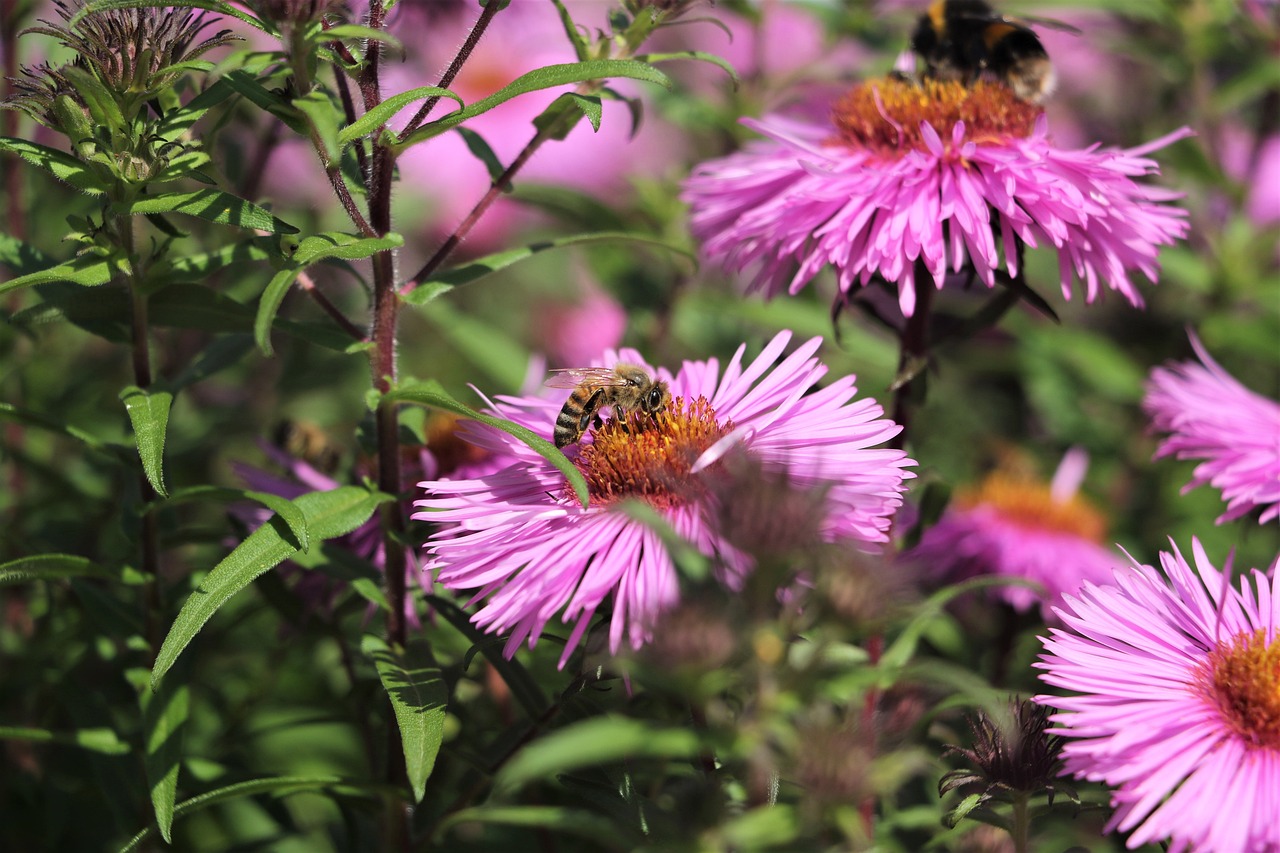
Judi Harvest: Creating a Honey Garden in Venice
By Gayil Nalls
Sign up for our monthly newsletter!
American artist Judi Harvest has deep roots in Miami, where she cultivated a profound connection to waterway ecosystems and the diverse creatures that inhabit them, including waterbug insects, also known as aquatic macroinvertebrates. Captivated by these diminutive beings, Harvest not only kept them as pets but to the surprise and wonder of others she trained them to respond to her calls and perform tricks, earning her the esteemed “Smallest Pet” award annually through her early school years, and bringing the intelligence of waterbugs into question.
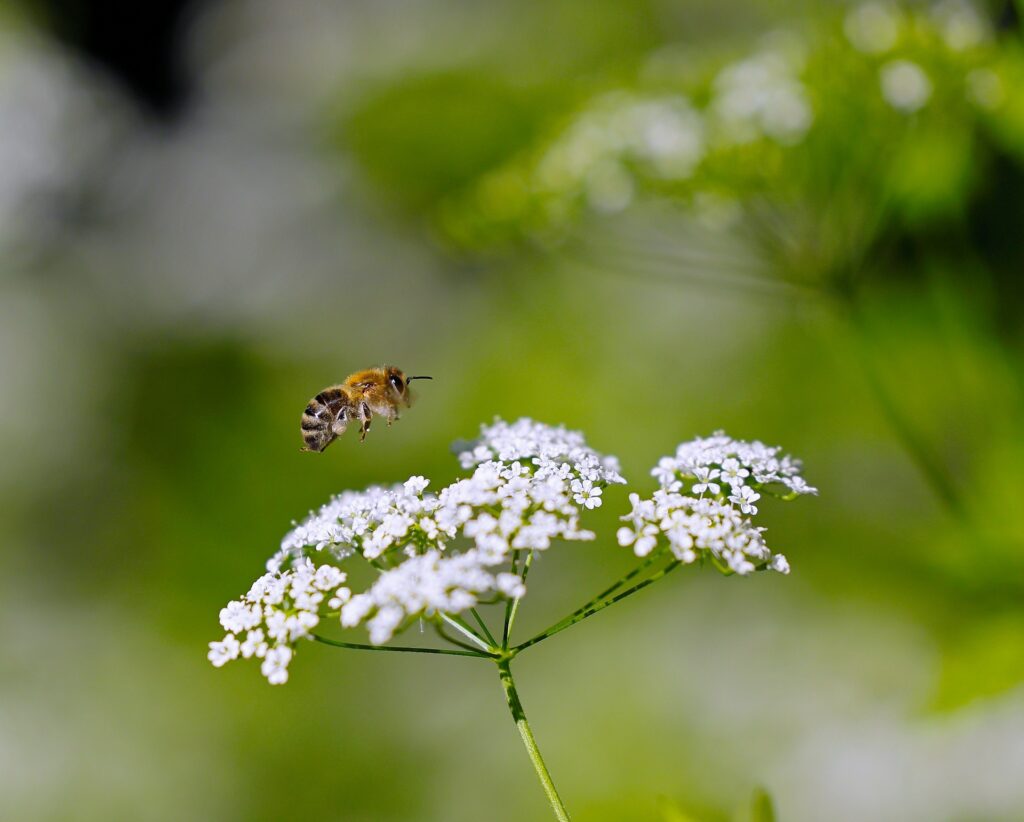
Later in life, during her time in creating in Venice, a city also intimately intertwined with water, Harvest became acutely aware of the troubling phenomenon of colony collapse disorder and the rapid decline in honeybee populations. Recognizing the crucial role that bees play in pollinating plants and sustaining ecosystems, she became a beekeeper and conceived an ambitious project to establish the Murano Honey Garden in Venice. Despite facing skepticism from others that it could be done, Harvest remained resolute, propelled by her passion for conservation and her conviction in the transformative potential of art and nature.
Creating a garden that attracts and supports bees, thereby contributing to the health of the local ecosystem, is challenging enough in most locations, but the logistical hurdles in Venice are particularly daunting. From bringing in tons of soil, to carefully selecting and locating a diverse array of bee-friendly fruit trees and aromatic plants that would thrive and have prolonged blooming periods in Venice, to sourcing healthy adapted honeybees and constructing their shelters.
In 2013, again to the amazement of many, Judi Harvest opened The Honey Garden, a vibrant and welcoming garden that promotes the welfare of bees and aromatic plants, transforming a forgotten field behind the Giorgio Giuman glass factory, in Murano, Italy into a permanent art installation hosted in the Giuman furnace.
This April I had the opportunity to visit her at the Honey Garden in Venice and talk with her about her efforts and challenges to create it.
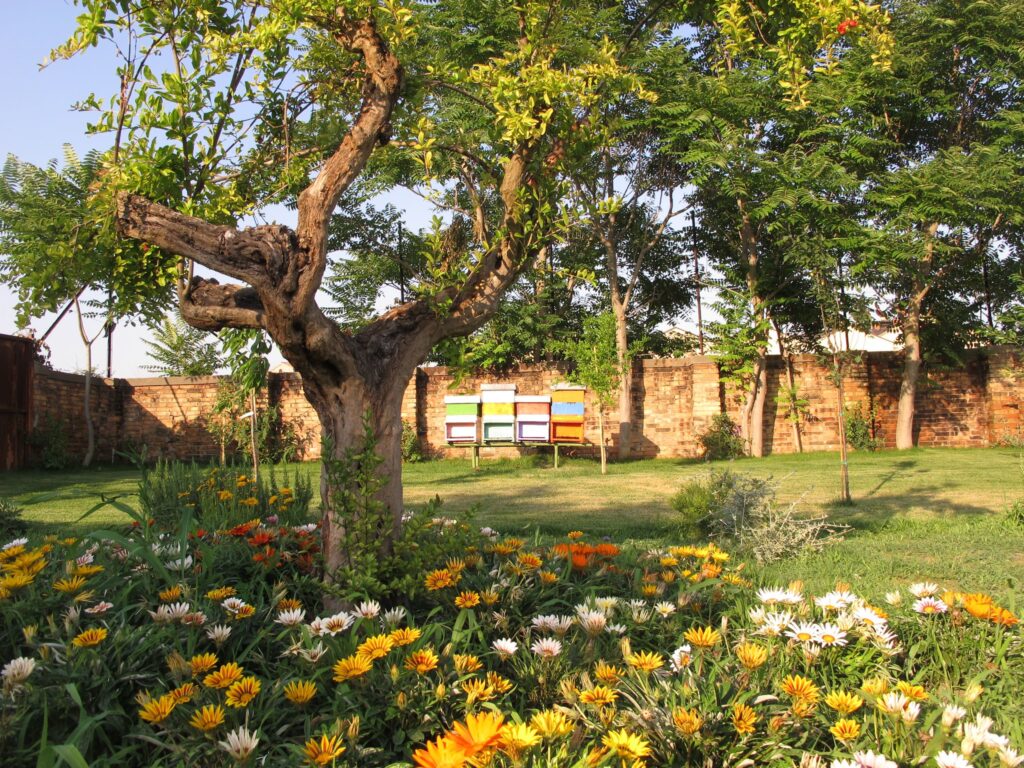
Gayil Nalls: How did you begin?
Judi Harvest: When I decided to build the Murano Honey Garden on the forgotten field behind the Giorgio Giuman glass factory in Sacca Serenella, Murano, I knew I needed three essential things: fresh soil, pollinator-friendly flowers and plants and of course healthy honeybee colonies!
The first adventure was finding fresh, new soil after I excavated around 12-18 inches of glass-filled soil. The roots of the plants and trees could be compromised otherwise.
I was told there was a man named Gianni with a boat full of soil, a crane and tractor that passed by occasionally. I waited outside the factory on the water, day after day until one day I saw him and yelled “Gianni viene qui” (come here!)
He pulled over the huge transport boat and looked at the field and told me I needed 6 boatloads of soil. I had no budget, no sponsors and to this day, the Honey Garden is supported by sales of my artworks, donations and Murano Honey sales. I believed 3 boat loads would be enough. Who knew what the boatload of soil exactly was? We don’t have this measuring system in the US. At 6:00 am the next day he phoned me to come see the garden, he was right 3 was not enough. Six boatloads later we were ready to plant the flowers and trees.
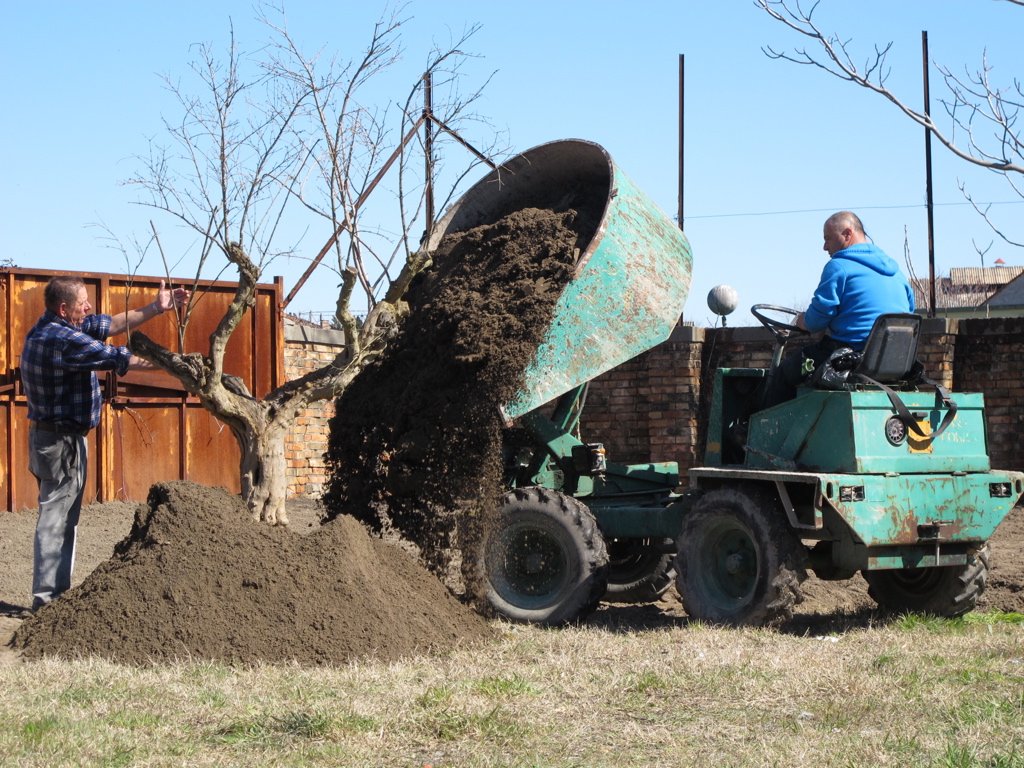
After you cleared the ground of this rough site and brought in garden soil, you were prepared for plants.
After the soil, I needed the right plants. There’s no place like Home Depot or a garden center or something like that in the city of Venice or on any of the nearby islands where tourists or locals go. There is an island called Treporti, which is a port, which has a marina, fishing, boats, and lots of greenhouses where they grow things and sell them. Marco Giuman, Giorgio Giuman’s son, the glassmaster I worked with and the family for 36 years now, lives in Treporti. He says when he’s walking to the vaporetto, there’s a greenhouse and garden center place near the vaporetto that he sees, and he would accompany me there. One day after work, they stopped working at 3:45, by 4:15, he was ready to leave the factory. We take the boat that goes to Treporti, from the Faro, which is the lighthouse in Murano.
We walk there, we get the boat. Now it’s about 4:30, 4:45. Rainy again, as I mentioned, a horrible season… just horrible. I was lucky that it rained because we needed the water, but it was tough for me to do this project with the elements that I was facing. Even hail. We get there and it’s now slightly dark, and we walk from the vaporetto, which is about a 20-minute walk straight down the road. We find this place and the guy is wanting to close up, but he lets us in because we called. He didn’t know if we were showing up, I guess. He gives us flashlights and we go through his greenhouses. I had a list because I had spoken with the gardener, Charles Day, at Wave Hill when I had an exhibition there and made friends with Charles and also Roger Repohl, who was the beekeeper there.
The three of us sat down at a table, and he had done some research about the plants that I would need for bees there and gave me the list. I go with this list to Treporti, and I say, “Claudio, this is what I need.” And he chuckles, good luck with that list I thought. He says, “Come on, let’s take the flashlights.” We had on our high-water boots because there was a lot of mud. That’s why he kept saying, “Don’t come today. There’s mud. Don’t come today, there’s mud.” Finally, I just said, “I have the boots. I’m coming. Mud, no mud, I’m out of time.” So, I put on my boots, which I seem to wear a lot there. It’s often wet both in the factory and in the garden. This is a tip for when you visit. If you don’t have boots, you can buy them in Venice and you’ll likely need them. It doesn’t matter the season now, because the water is always rising. Even with MOSE, the Venetian damming project. We live with a constant awareness of Venice’s fragility to climate change.
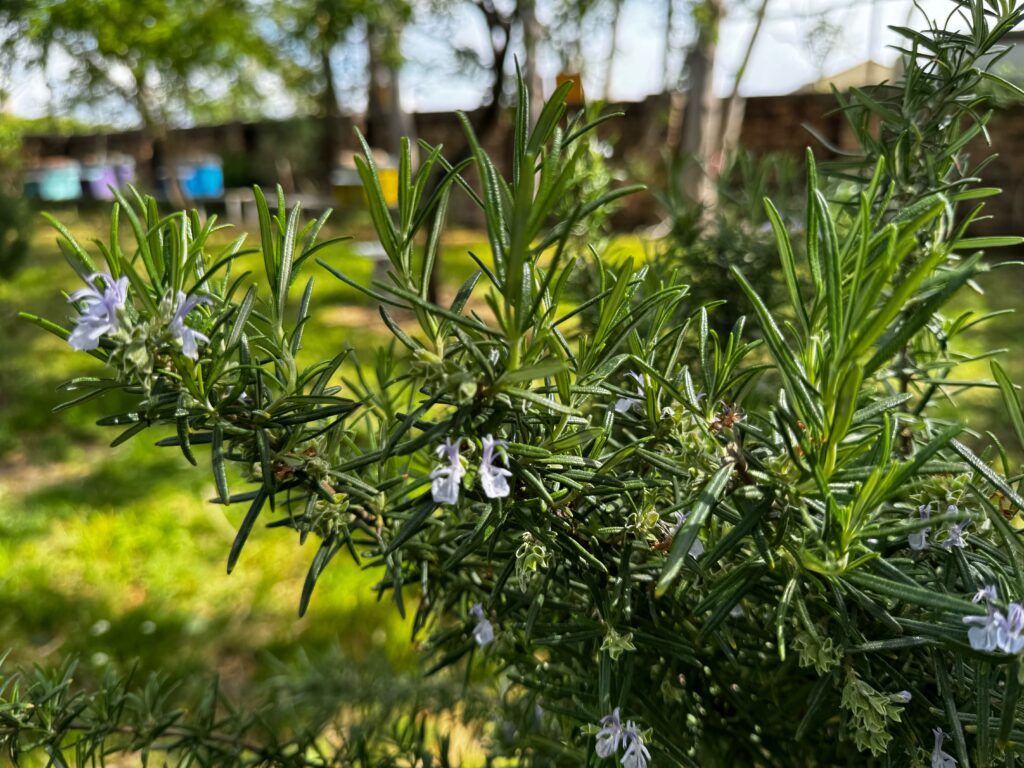
We find the plants, including rosemary, lavender, jasmine, roses, sage, thyme, wisteria, and more. Claudio puts them on these large trolleys and tells me the next day he is going to bring them. I asked him, “How much do you think they are?” And he says he’ll figure it out. He looked honest. I looked nervous. Didn’t matter. I was in this too deep to turn back. So on the way out, I said, “Wait a second. I want this tree, a pomegranate tree.” It was growing in a large tub. He said, “That’s my tree.” I said. “Listen, the deal’s off, no pomegranate tree, no plants.” He thought about it and said, “This is a 150-year-old pomegranate tree. I said, “Oh, please Claudio, I just can see this in the garden, like welcoming arms and it’s a symbol of prosperity and abundance, I need this tree.”
He said, “Okay.” So the tree had to come in by crane over the walls of the garden and then be dragged to its position. And now I’m in this field that was a dumping ground for glass. I did a little sketch and I thought, more or less, I’m going to try to create this sketch. But when the pomegranate tree came in, it changed everything. It was like one element in a painting. You knew it needed that structure in the center. And it has grown and produces around 40 pomegranates a year. It became a symbol in my work. I make glass pomegranates and I make the seeds. That led to another project, an exhibition called Propagation Bees and Seeds, where I made everything that grows in the garden in glass. Inspired by the installation at Harvard by the Blaschka brothers, who knew that certain flowers would disappear and dried flowers don’t last forever. So they were commissioned to make them in glass actually twice, because with shipping, the first batch were damaged and destroyed when they got through customs at the airport. But the next time they hand-carried them on the plane. I know how that can be. I work in glass because it further symbolizes the fragility of life and the search for beauty in my work. Murano glass has beautiful qualities that involve the minerals from the earth. With the Honey Garden I am giving something back to the earth where my inspiration and art supplies come from. People really enjoy coming there to visit and interact with nature, the honeybees, and the glass masters.
The pomegranate tree is an important symbol for me in the garden. The pomegranates it produces are amazing. They’re huge– the size of grapefruits. I wait and wait and wait for them to become the right color, and by that time I usually have to leave Venice, so everyone in the factory gets to eat and enjoy them.
I’m always hesitant to eat them myself because they look so beautiful on the tree that I leave them. The birds and bees eat them too. The bees, oh my goodness– one day one had cracked open because it was mature, and all these honeybees were inside. That year I was trying to figure out if they made pomegranate honey or not, because we harvest the honey usually in September, end of August, once a year, but couldn’t really tell … We do analyze it to make sure it doesn’t have pesticides. We send a jar to Padua every year to a laboratory, and it’s always passed that process and that’s important. I want my bees and their honey to be pesticide-free. My garden is pesticide-free but I want to make sure they’re not getting exposure from elsewhere.
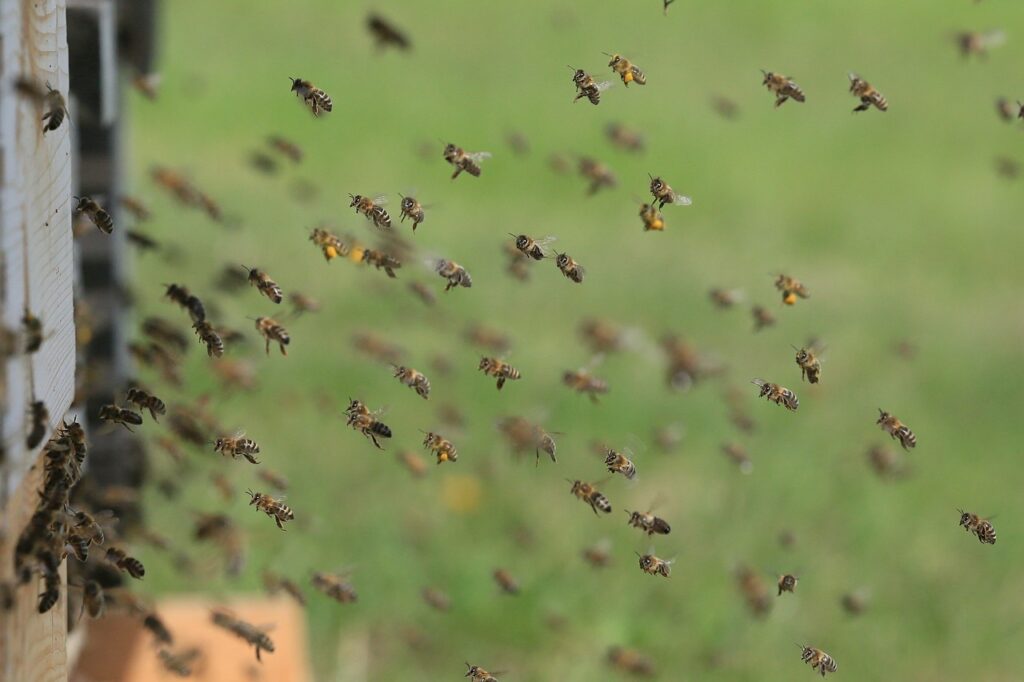
After planting most of the trees and flowers, what was your next step?
Bees are a keystone species. Of the 20,000 species of bees in the world, only 8 species are honeybees, but they all are facing a lot of challenges to stay alive.
My next task was to obtain healthy bees to complete the project. However, finding beekeepers willing to part with their native honeybees in Venice wasn’t easy. Despite being given a few names and searching online, my initial attempts were unsuccessful. One beekeeper I met in Jesolo couldn’t sell or provide me with bees because his bees were stressed due to ongoing construction in the lagoon known as MOSE, aimed at preventing Venice from flooding. The vibrations from the construction were disturbing the bees, affecting their rest and foraging patterns.
Feeling disheartened but not giving up, I heard about a beekeeper on the island of Sant Erasmo named Elio Mavaracchio, who was famous but unlikely to help. Nevertheless, I decided to reach out to him, hoping for a chance. Despite challenges like pouring rain, lots of mud, and uncertainty about finding his place, I persisted and arrived on the island. Eventually, I encountered a car on the road and after asking for directions, I discovered it was Elio himself.
Bumping along, he graciously took me to his hexagon-shaped house, where I was amazed to see a multitude of colored beehives, numbering around 200 or 250. “Are you hungry? he asked me. I was hungry but it was getting dark and I wanted to talk to him about bees.” Suddenly, I was washing radicchio and he’s making risotto. I asked to go outside and see the bees. However, Elio kept expressing concerns about the condition of his beehives, noting issues with each one. Despite this, I pleaded for just four hives, offering to pay for them.
After sharing a meal and discussing the idea with his partner Veronica, Elio agreed to set up four beehives. Days later, they carefully transported the beehives by boat to the garden, and our friendship continued. Thus began a remarkable journey, notwithstanding its challenges. These bees have great genetics, so in time, the number of hives multiplied, new queens emerged, and swarms occurred. Despite occasional setbacks, I am thankful for my four-thriving hives. Beekeeping embodies a symbiotic relationship founded on kindness and respect. Luca Polo, a dedicated beekeeper, plays a crucial role with me in maintaining the health of the hives. It’s paramount to honor the bee’s needs and ensure they have ample nutrition. Honey production is essential for the bees’ survival during winter.
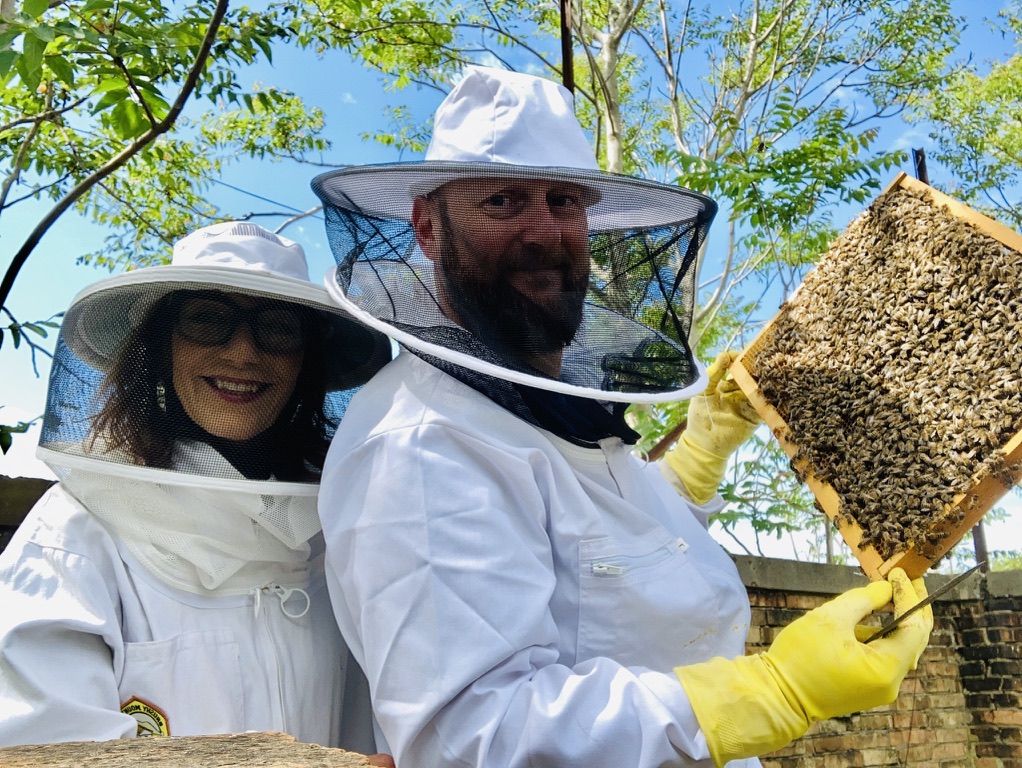
Could you discuss your concerns regarding ensuring bees have access to sufficient forage and how you consider their travel range?”
When I built the garden, planting 500 flowering plants and 30 little fruit trees, there was no way to know if that was going to be enough for the bees. Flowers are their only food. They need five million flowers to make a pint of honey and they forage from sunup to sundown. They may visit a thousand flowers a day drawn to them by odor and color patterns. Bees pollinate flowers primarily with sweet scents and they see them in the ultraviolet color spectrum, which humans do not see and are probably more beautiful with patterns that guide them toward the nectar and pollen. Who knows the exact number of plants they visit, but there are some statistics … and they are specific. The flowers need to be easily accessible, such as a sunflower, which is flat. Or a rose, which doesn’t have multiple petals. They don’t like to waste time. They’re not going to go in and dig. They love Magnolias because they can zoom around the interior of the blossom and there is a lot of pollen. But I was concerned, and I worried about whether they would have enough to eat. I certainly didn’t want them to die of starvation.
“Honeybees navigate by the latitude and longitude of the sun and therefore know which vaporetto and what time it arrives. This information is communicated among the bees through the Waggle Dance –their language is a dance.”
However, it turns out that in Venice, many gardens are not obvious, because people have created them inside their palazzos or behind walls. There’s a book by Tudy Sammartini called The Secret Gardens of Venice, that shares some of them. She has since passed, but she was famous for her research and photographs of the secret gardens. However, my bees found their closest additional foraging spot in the cemetery. It’s quiet. There are floral plants there and people regularly bring flowers. The most interesting thing is that they take the Vaporetto to get there, which was an amazing discovery for me. One day, I was riding on the vaporetto as always, outside. I don’t like to be crowded inside with lots of people and tourists and so on. So, I stay outside, right by the gate where the person that opens the vaporetto, lets people in and out from. We arrived at the cemetery, which is the first stop from the island of Venice from the Fondamente Nove. Vaporetto 4.2 stops at the cemetery and then Murano. I’m out there and I look up and I see some bees on the sign CIMITERO (Cemetery) and I’m thinking, wow, those are mine. I’m sure they’re my bees. So I took a picture and the woman who was opening the vaporetto gate said, “Oh, Senora, don’t worry. They don’t do anything. They don’t harm anyone.” I said, “I know, I’m their mother.” I get back on again and the captain of the vaporetto says to me, “And when it rains, they ride inside with me.” I said, “That’s very funny.” So then I think, “Wait, stay outside and watch.” And at the first stop, they don’t get off the vaporetto- they’re still clinging onto the ropes. The second stop is Serenella where I have the garden and keep the bees-and when we arrive, they fly out and fly home.
They don’t swim. It’s one of the few things honeybees don’t do. They get water from nectar and they do drink water, especially in the summer, and they need it for the hive, but they don’t really like water. They don’t like rain. They never go out if it rains. If it starts to rain while they’re out, they’ll seek some kind of refuge, as in with the Vaporetto captain.
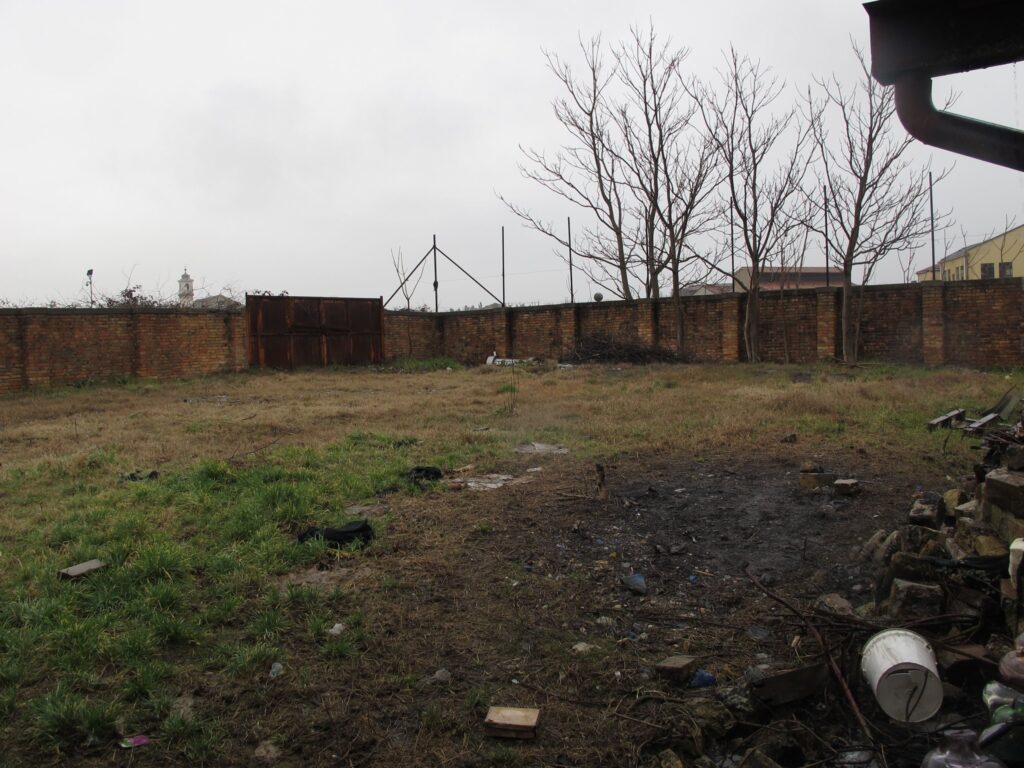
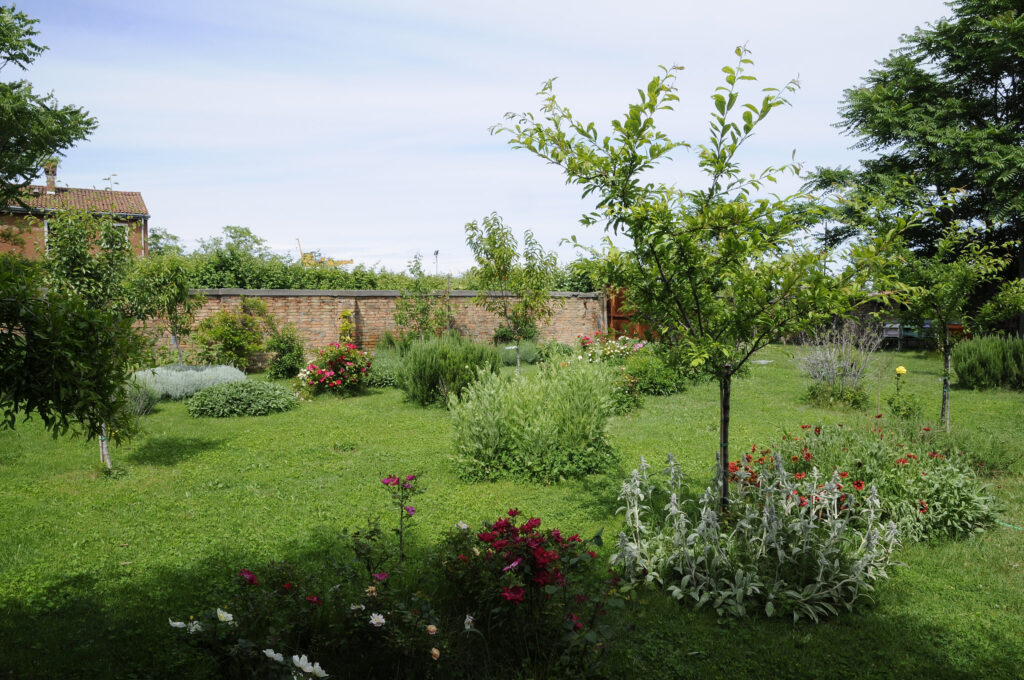
At that point, Giorgio Giuman, the glass master I work with, happened to be standing at the vaporetto stop. He is rarely out of the factory, but he had to go somewhere, and he saw 10 or so bees take off. He says, “Giudita, look!” And everybody was amazed.
At that point, I realized that bees can’t fly long distances over the water and that they may communicate the path to distant flowers which includes taking public transportation. The German paleontologist, Karl von Fritsch discovered the Waggle Dance in 1943, which is the unique dance that honeybees do for their sisters, the other worker bees, in the shape of figure eight to communicate direction, location, distance to foraging sites and new nest site locations.
Bees don’t have ears. Their communication process, or language, is dance. They can communicate up to 40 million messages in one dance. The rhythmic, circling dance is performed inside the hive after one or many bees comes back from foraging. The different scents of the pollen on their furry little bodies also convey information. Honeybees are furry, as opposed to a wasp, which is not, and are the enemies of honeybees. So they do this dance and while they’re dancing and waggling, the scent comes off and they dance in the direction of the latitude-longitude of the sun. At noon, around when I saw them, is when the sun is hitting the flowers that they need in the cemetery at the right angle. They have to be very quick. They only live four weeks, so they have to get in and get out. They don’t have time to waste. Their dance floor is generally the very entrance of the hive. I call it a dance floor. I’m sure it’s technically called something else. Out they go to whatever patch of flowers the scout bee has come to inform them of.
This goes on, sunup to sundown, three miles out, three miles back every day. They don’t forage only in their garden. I see them, they’re hanging out there, but they also pollinate elsewhere. In the mornings, like an airplane, they’re up and out at sunrise. Up they go and out they go, thousands of trips a day per bee. And back in again with the pollen on their kneecaps. Sometimes the pollen is so big they can’t fit into the openings of the hive. They get enthusiastic, I know how that is. They fly with three times their body weight. Bees have collected these pollen balls in their knee pockets, a little like cargo pants. Entering the hive, the pollen rarely falls off, if it does, another bee comes out, picks it up, and brings it in. They work together. It’s an amazing thing to see how they help each other.
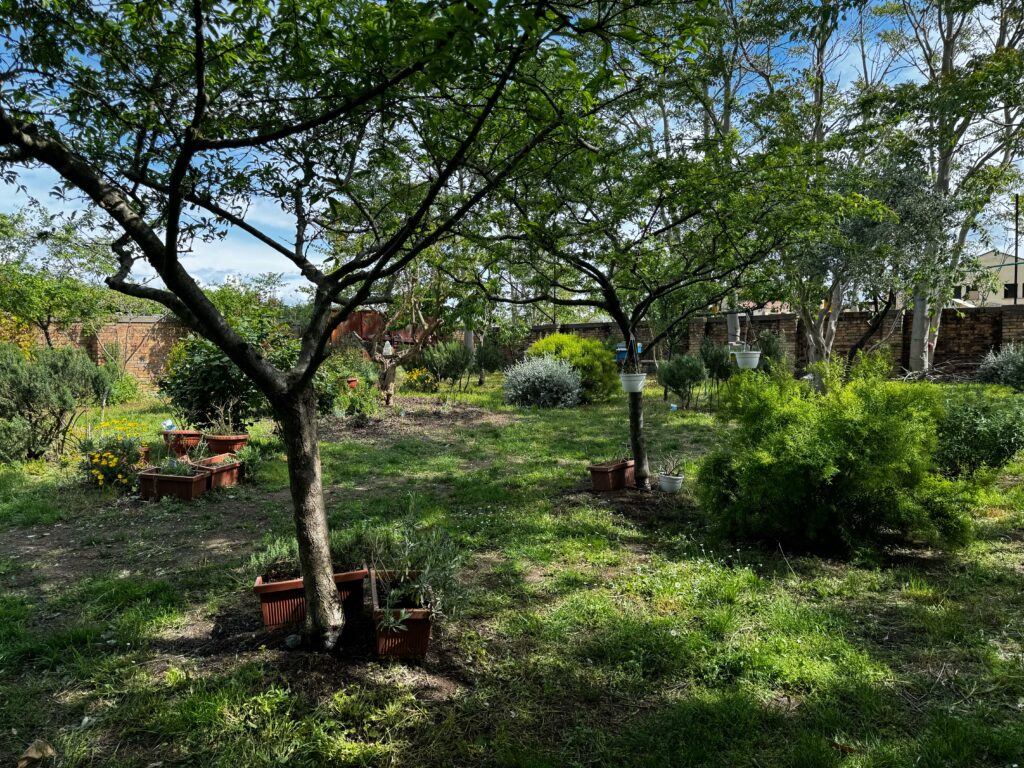
This demonstrates remarkable complex and adaptive behavior. I can’t help but wonder if the Waggle Dance really explains that they have to take public transportation to the food source.
I wrote and illustrated a book called “The Mysterious Traveling Honeybees of Venice.” People thought I made it up. But now some people come up to me and say, “Hey, I saw your bees going to Burano. I saw … ” And on the larger boats, called Traghettos, sometimes they ride on the life preservers at the top. The Traghettos go to Burano or Torcello. So, they have other places to hang out. When they travel on the Traghettos they usually position themselves outside, at the top, on the life preservers. So keep your eyes open when you’re in Venice.
The natural sunlight in the Honey Garden has a wonderful poetic quality filtering through the foliage. One becomes vividly aware of the sun’s positioning. Overall, I was struck by its graceful, serene beauty and how it evokes contemplation on the interconnectedness of life, provides revelations for the senses, and instills hope. Thank you for the resilience you have created for an ecosystem under climate stress and for making a home for over 200,000 bees.
When I started the garden in a furnace waste yard, I assumed the weather would cooperate…it rained, it snowed, it flooded. We never gave up. After 6 boat loads of soil, 30 fruit trees, and 500 flowering aromatic plants, the bees and hives, there is fantastic honey and healthy and happy, flourishing bee colonies. The sun is out and 12 years later we are enjoying its beauty. Beauty matters and I believe art heals.
TO VISIT THE MURANO HONEY GARDEN
Visits to the Murano Honey Garden are by appointment only as it’s inside the Giorgio Giuman Glass Factory on Sacca Serenella, Murano. This requires 24-48 hours in advance request. Contact Judi Harvest: judiharvest@gmail.com. Judi or her assistants who speak English, Italian, and Spanish, will meet the visitors.
Judi Harvest, creates art inspired by nature and endangered species. During her career, she has begun to realize that glassmakers and the field of glassmaking is an endangered species too. Based out of Venice, Italy, and New York City, she has a studio on an island in Murano that she’s worked out of since 1988. She’s witnessed generations of glass artisans vanish, with her building’s occupancy dropping from 77 residential working glass masters to just 5. Her work intertwines protecting the interdependent relationship of bees, bats, and Murano art glass ecosystems from extinction. Concerned with the fragility of life on our planet, her goal is to inspire urgent environmental action. You can follow her on Instagram at: Judi.Harvest and on Facebook at: Judi Harvest.
View her art at: www.JudiHarvest.com
Gayil Nalls, Ph.D., is the creator of World Sensorium and founder of the World Sensorium/ Conservancy.
Plantings
Issue 30 – December 2023
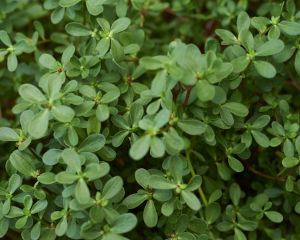
Viriditas: Musings on Magical Plants: Portulaca oleracea
By Margaux Crump
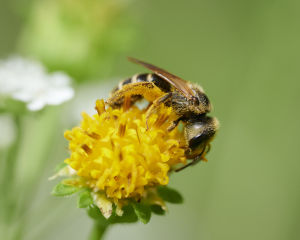
Proboscis, Pollen, and the Rapture of Interspecies Intimacy
By Jake Eshelman
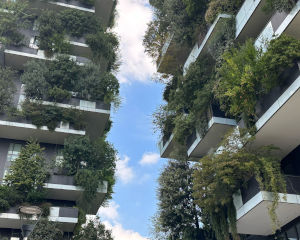
The Greening of Milan: Porta Nuova and Vertical Forest
By Gayil Nalls
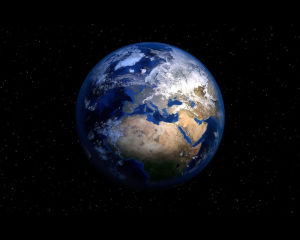
Overshooting Earth’s Boundaries: An Interview with Bill Rees
By Rachel Donald
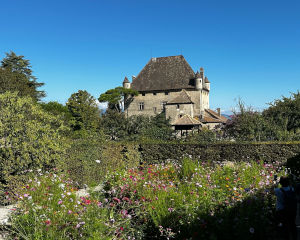
The Garden of the Five Senses
By Gayil Nalls
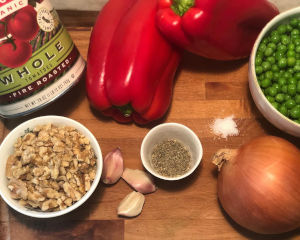
Eat More Plants Recipes:
Le Botaniste’s Fennel, Tomato, and Red Pepper Pasta Sauce

As Ireland transitions from the rich, smoky scent of peat-burning to a more sustainable future, its olfactory heritage is evolving. What will become the next iconic aromatic symbol of Ireland?
Click to watch the documentary trailer.


